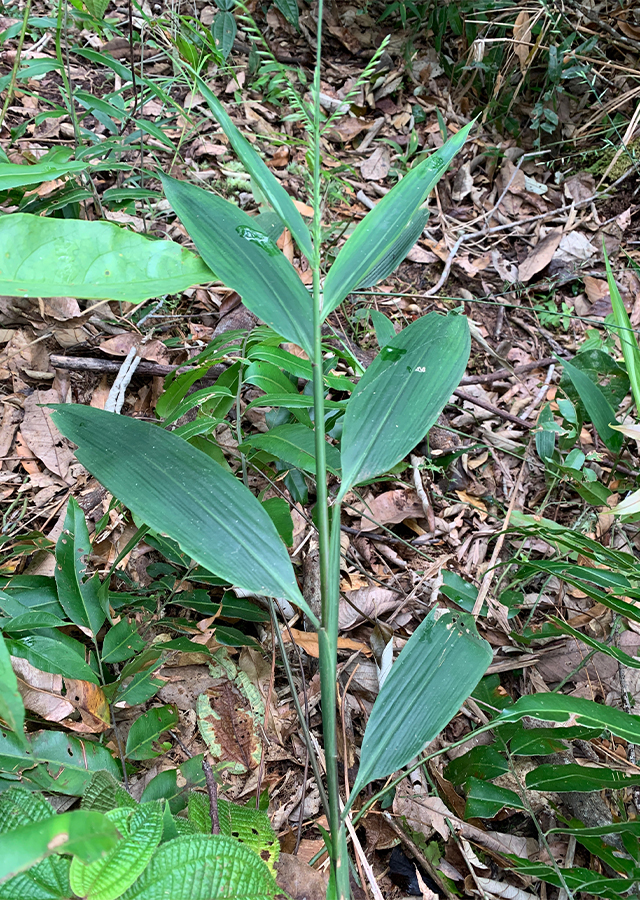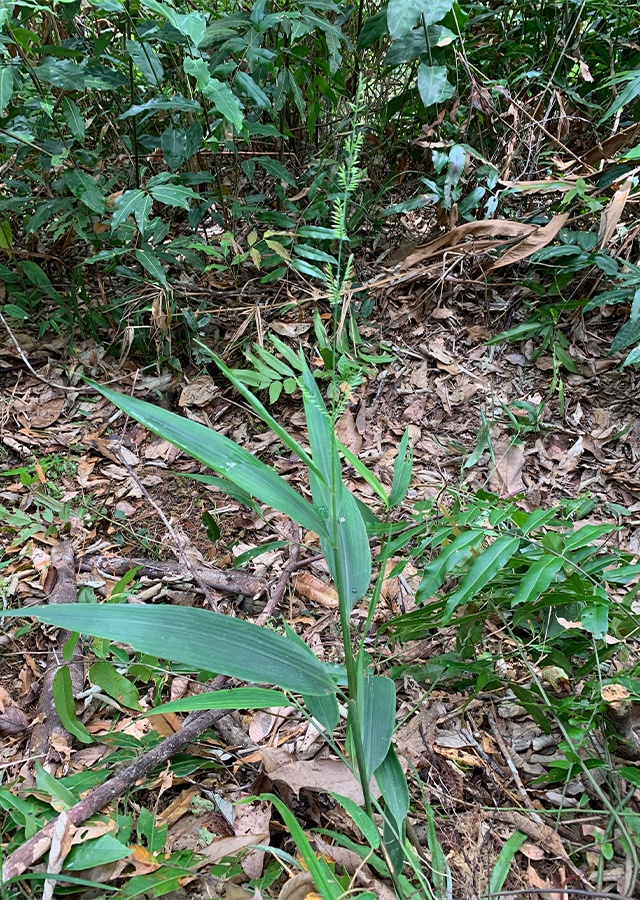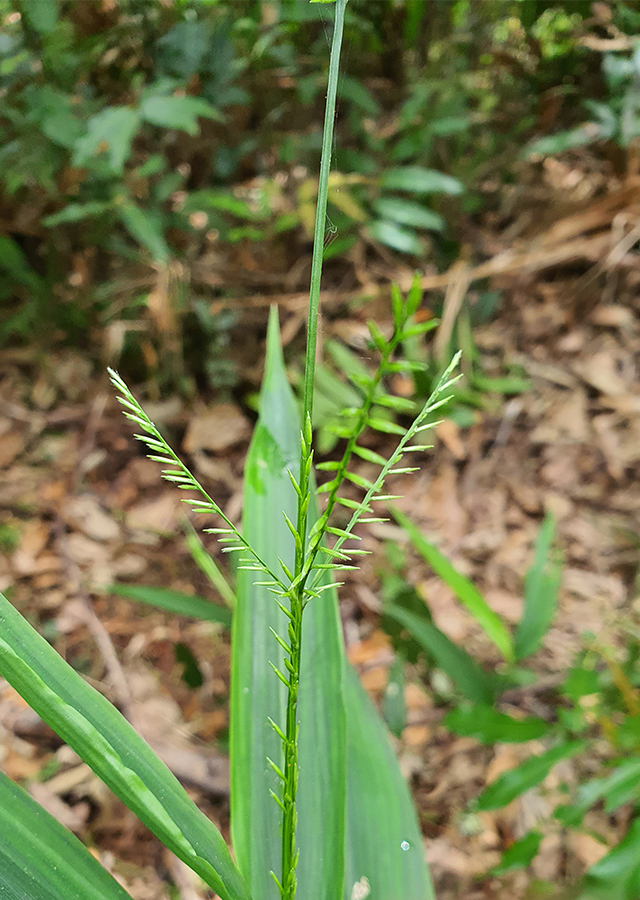Bamboo Grass
Lophatherum gracile Brongn.
Poaceae
Location in our garden
Green House



Synonym
Acroelytrum japonicum Steud.
Acroelytrum urvillei (Steud.) Steud. ex Miq.
Allelotheca urvillei Steud.
Habitus
Herbaceous. A perennial and tufted herb, with short and branched rhizome, can reach up to 120 cm tall
Part Used
Leaves
Roots
Growing Requirements
Need Shade
Habitat
Forest
Grassland
Overview
The native range of bamboo grass is South China to Japan and tropical Asia, Papua Nuguni, and North Queensland. It is widely distributed in tropical and subtropical Asia, the whole Malaysian region and northern Australia.
Vernacular Names
Rumput Bambu (Indonesia), Phai pen lek (Thailand), Dan zhu ye (Chinese), Dam juk yeap (Korean), Tan chiku yo (Japanese), Rumput buluh (Malaysia).
Agroecology
L. gracile usually occurs in mixed forest, in shaded, in the rainforest, also in vine forest, not too dry localities up to 1,500 m altitude. Altitudinal range from 40-400 m.
Morphology
- Roots - fibrous, locally thickened to spindle-shaped tubers, which are up to 4 cm long and erect, compressed and hollow culms.
- Stem - culms tufted from a knotty rootstock with fusiform roots, base of culms bulbous, slender, stiffly erect.
- Leaves - distichously alternate arranged, simple, ovate-lance-shaped, 10-30 cm x 1-5.5 cm. It is contracted into 6-18 mm long pseudo-petiole at base, acuminate at apex, scabrous margins, smooth to hairy and distinctly cross-veined. The sheath is hairless, but margins are ciliate. The ligule is very short and truncate.
- Flowers - the inflorescence is a spike-like panicle, up to 45 cm long, consisting of irregularly and distantly placed spiciform racemes that up to 15 cm long with spikelets are in 2 rows.
- Fruits - an oblong-fusiform caryopsis and about 3.5 mm long.
Cultivation
- Generative propagation is by seeds.
- Vegetative propagation is by new sprouts.
Chemical Constituents
Arundoin, β-sitosterol, campesterol, cylindrin, friedelin, isorientin, isovitexin, orientin, stigmasterol, taraxasterol, and vitexin.
Traditional Medicinal Uses
- Studies showed antipyretic, diuretic, antibacterial, anticancer, anti-tumor and hyperglycemic effects.
- In China, the whole plant form part of the ingredient in a pot herb prepared for women after delivery.
- The tuber is considered an aphrodisiac and is believed to increase semen production.
- The leaves are used to treat canker sores in the mouth, buccal sores, swollen gums and pharyngitis.
- Decoction of the leaves is also used to treat urinary tract infection and at the same time relieves haematuria, oliguria, dysuria and strangury.
- Dried leaf of Lophatherum gracile, has long been used to reduce thirst and treat fever and inflammation in Chinese medicine.
Part Used
Reference Sources
- Lophatherum gracile Brongn. in GBIF Secretariat (2021). GBIF Backbone Taxonomy. Checklist dataset https://doi.org/10.15468/39omei accessed via GBIF.org on 2021-12-01.
- Zhang, Jing & Wang, Ying & Zhang, Qing-Wen & YE, Wen-Cai. (2010). Chemical Constituents from the Leaves of Lophatherum gracile. Chinese Journal of Natural Medicines. 7. 428-431. 10.3724/SP.J.1009.2009.00428.


